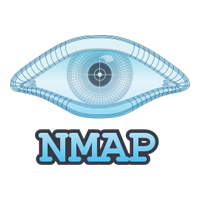Vulnerability scanning is critically important for identifying security flaws in hardware and software, but vulnerability scanning types are as varied as the IT environments they’re designed to protect.
In this article, we’ll delve into various types of vulnerability scans, explore their benefits, outline the ideal scenarios for running each type, and list the best vulnerability scanning tool to use for each type of scan. By understanding these distinctions, you can improve your overall cybersecurity defenses and harden your systems against potential threats.
See The Best Vulnerability Scanner Tools
Jump ahead to:
- Host-based Scanning
- Port Scanning
- Web Application Vulnerability Scanning
- Network Vulnerability Scanning
- Database Scanning
- Source Code Scanning
- Cloud Vulnerability Scanning
- Internal Scanning
- External Scanning
- Assessment Scanning
- Discovery Scanning
- Compliance Scanning
- What’s the Difference Between Authenticated & Unauthenticated Vulnerability Scans?
- Choosing Which Type of Vulnerability Scan to Run
- Bottom Line: Types of Vulnerability Scans
Featured Vulnerability Management Software
Host-based Scans
Host-based vulnerability scanning is aimed at evaluating vulnerabilities on specific hosts within an organization’s network. These scans can be agent server-based, in which an agent is deployed on the target host; agentless, in which no agent is required; or standalone, in which the scanning capabilities are self-contained.
- Agent-Server: The scanner installs agent software on the target host in an agent-server architecture. The agent gathers information and connects with a central server, which manages and analyzes vulnerability data. The agent does the vulnerability scan and sends the results to a central server for analysis and remediation. In general, agents collect data in real time and transmit it to a central management system. One disadvantage of agent-server scanning is that the agents are bound to specific operating systems.
- Agentless: Agentless scanners do not require any software to be installed on the target machine. Instead, they collect information through network protocols and remote interactions. To centrally launch vulnerability scans or establish an automatic schedule, this approach requires administrator-credentialed access. Agentless scanning does not require the same operating system-specific requirements as agents. This allows for the scanning of more network-connected systems and resources, but the evaluations require consistent network connectivity and may not be as thorough as with agents.
- Standalone: Standalone scanners are self-contained applications that run on the system being scanned. They examine the host’s system and apps for weaknesses. This scan does not use any network connections and is the most time-consuming of the host-based vulnerability scans. It is necessary to install a scanner on each host that will be checked. Most enterprises that manage hundreds, if not thousands, of endpoints will discover that standalone tools are not practical.
Benefits of Host-based Scans
- Identifies vulnerabilities in the operating system, software, and settings of the host
- Provides visibility into the security status of specific network hosts
- Assists with patch management and quick vulnerability repair
- Aids in the detection of illegal program installs or modifications to settings
- Contributes to the overall security of hosts by minimizing the attack surface
When to Run a Host-based Scan
- When thorough information on the host’s setup, patches, and software is necessary
- When assessing the security of individual network systems or servers, and organizations with a complicated network infrastructure with a high number of individual hosts
Best Tool to Use

Tenable Vulnerability Management (formerly Tenable.io) provides enterprises with a comprehensive and fast solution for assessing vulnerabilities at the host level. Tenable.io’s host-based scanning works by deploying lightweight software agents on specific hosts throughout the network. These agents gather data on the host’s operating system, installed software, settings, and other pertinent information. This data is subsequently transmitted to the Tenable.io platform for analysis and vulnerability assessment.
Tenable.io is a popular option for enterprises looking for comprehensive host-based scanning solutions due to its agent-based approach, continuous monitoring, asset management features, integration capabilities, and vast vulnerability knowledgebase.
Pricing: Tenable Vulnerability Management costs $2,275 a year for 65 assets, with discounts for multi-year contracts.
Port Scans
Port scanning sends network queries to different ports on a target device or network. The scanner detects which ports are open, closed, or filtered by analyzing the results. Open ports may suggest possible vulnerabilities or network-accessible services.
Benefits of Port Scanning
- Detects open ports and services on target computers, revealing potential attack vectors
- Identifies misconfigurations and services that may be exposed to exploitation
- Assists in network mapping and understanding the network infrastructure’s topology
- Detects illegitimate or unfamiliar services on network devices
- Closes unnecessary open ports and services to help with security hardening
When to Run a Port Scan
- When businesses want to know how vulnerable their network is to outside attacks
- Useful for locating open ports, services, and other points of entry that attackers may use
- It is advised as the first step in evaluating the security of network equipment and systems
Best Tool to Use for Port Scans

Nmap Security Scanner communicates directly with the host’s operating system to collect information on open ports and services, after which it applies techniques such as TCP connect scanning, SYN scanning, UDP scanning, and more. Each approach employs a different strategy to ascertain the state of the target ports (open, closed, or filtered).
Because of its versatility, extensive features, active development, scripting support, and cross-platform compatibility, Nmap’s host-based scanning for port scans is highly respected. These features make Nmap a popular port scanning tool among network administrators, security experts, and amateurs.
Nmap is free and open source for end users, but there’s also a paid license for OEM redistribution.
Also read: Nmap Vulnerability Scanning Made Easy: Tutorial
Web Application Scans
Web application scanners are used to identify vulnerabilities in web applications. These scanners frequently probe software to map its structure and discover potential attack vectors. These scanners automate the process of scanning web applications, evaluating the application’s code, configuration, and functioning to find security flaws. Web application scanners simulate many attack scenarios to discover common vulnerabilities, such as cross-site scripting (XSS), SQL injection, cross-site request forgery (CSRF), and weak authentication systems. They utilize techniques such as crawling the application to identify all available pages, sending input data to forms, and reviewing server responses for potential vulnerabilities. Web app canners typically use predefined vulnerability signatures or patterns to detect existing vulnerabilities.
Benefits of Web Application Scans
- Detects web application-specific vulnerabilities such as SQL injection, XSS, and insecure authentication
- Aids in the discovery of security holes that might result in unauthorized data access or alteration
- Assists in maintaining compliance with standards and regulations
- By detecting code flaws and vulnerabilities in online applications, it contributes to secure development standards
- Reduces the likelihood of breaches and safeguards critical user data
When to Run a Web Application Scan
- Ideal for use by organizations with web apps, websites, or other online services
- When reviewing the security of online applications and finding vulnerabilities such as XSS, SQL injection, or improper authentication
- For web-based systems, it’s recommended throughout the development phase or as part of ongoing security audits
Best Tool to Use

Invicti applies an automated scanning technique to identify vulnerabilities in web applications. It discovers and evaluates all aspects of an online application, including its pages, inputs, and functions, using a combination of crawling and scanning approaches. The scanning engine of Invicti can identify a wide range of online application vulnerabilities, such as SQL injection, XSS, and remote code execution, among others.
The platform’s automated scanning, deep scanning capabilities, business logic testing, and powerful reporting capabilities make it a top choice for enterprises looking for dependable and quick web application security evaluations.
Invict does not publish pricing information, but the price for each plan can be obtained by contacting the vendor.
Also read:
- Best DevOps, Website, and Application Vulnerability Scanning Tools
- Top Web Application Firewalls (WAF)
Network Vulnerability Scans
Network vulnerability scanners detect vulnerabilities by scanning for known flaws, incorrect settings, and out-of-date software versions. To find vulnerabilities throughout the network, these scanners frequently use techniques such as port scanning, network mapping, and service identification. It also examines network infrastructure, including routers, switches, firewalls, and other devices.
Benefits of Network Vulnerability Scanning
- Detects flaws in network infrastructure components such as routers, switches, and firewalls
- Aids in the detection of misconfigurations, insufficient encryption algorithms, and out-of-date software versions
- Aids in the maintenance of a secure and robust network environment
- Supports risk management and vulnerability prioritization based on criticality
- Assists in meeting security standards and regulatory obligations
When to Run a Network Vulnerability Scan
- When safeguarding the network perimeter, preventing illegal access, and evaluating network device security
- Appropriate for enterprises looking to analyze the overall security of their network architecture
- Effective for detecting vulnerabilities in network equipment
- Recommended as part of routine security evaluations or while making network upgrades
Best Tool to Use

Microsoft Defender for Endpoint (formerly known as Microsoft Defender Advanced Threat Protection) is gaining traction as a vulnerability management scanning tool, especially for remote work and work from home scenarios. Within its security suite, it provides complete network vulnerability detection capabilities and operates solely through agent-based deployment. Microsoft Defender for Endpoint captures and analyzes network traffic data, such as network flows, protocols, and communication patterns, by deploying network sensors.
Microsoft Defender for Endpoint offers a number of benefits for network vulnerability scanning. Features include seamless interaction with Microsoft threat intelligence, behavior-based detection techniques, endpoint protection correlation, and centralized management. These capabilities enable enterprises to discover and resolve network vulnerabilities proactively, strengthen their security posture, and reduce possible threats.
Microsoft offers a three-month free trial for users to test out Microsoft Defender for Endpoint. Additionally, the Microsoft 365 E5 subscription includes Microsoft Defender for Endpoint Plan P2, which costs $57 per user per month. Contact Microsoft sales for detailed price information on different plans.
See the Best Enterprise Vulnerability Scanners
Database Scans
Database scanners are used to evaluate the security of database systems. They examine database setup, access controls, and stored data for vulnerabilities such as insecure permissions, injection problems, or unsafe settings. These scanners frequently provide information for securing databases and safeguarding sensitive data.
Benefits of Database Scanning
- Detects database-specific vulnerabilities such as insufficient access controls, injection problems, and misconfigurations
- Aids in the protection of sensitive data from illegal access or disclosure
- Assists in ensuring that data protection rules are followed
- Improves performance by detecting database-related problems
- Improves overall database security and integrity
When to Run a Database Scan
- When evaluating database management systems (DBMS), safeguarding databases, and protecting sensitive data from unwanted access
- Useful for organizations that use databases to maintain sensitive information
- Useful for finding database-specific vulnerabilities, misconfigurations, and lax access constraints
- Recommended for enterprises that prioritize data storage security and must comply with industry laws
Best Tool to Use

Imperva’s Scuba Database Vulnerability Scanner can detect hidden security issues inside your databases that may be missed by routine monitoring or manual assessments. Scuba is intended to scan enterprise databases for potential security vulnerabilities and misconfigurations, such as in Oracle, Microsoft SQL Server, SAP Sybase, IBM DB2, and MySQL. Following the completion of the scan, Scuba provides information and solutions on how to fix the detected concerns. This then assists database administrators and security teams in efficiently prioritizing and mitigating threats. Scuba is available for a variety of operating systems, including Windows, Mac, and Linux (both x32 and x64).
One notable advantage of Scuba is that it is available as a free tool, making it accessible to businesses with limited budgets or those looking for a cost-effective alternative.
Also read: 7 Database Security Best Practices: Database Security Guide
Source Code Scans
Early in the development cycle, source code should be checked for security vulnerabilities to identify possible issues before they become too costly to fix. Source code scanners examine software applications’ source code for security flaws, coding mistakes, and vulnerabilities. They look for possible vulnerabilities such as input validation errors, improper coding practices, and known susceptible libraries in the codebase. During the software development lifecycle, source code scanners assist developers in identifying and correcting vulnerabilities.
Benefits of Source Code Scanning
- Detects security flaws and vulnerabilities in software application source code
- Helps in the detection and correction of code problems early in the development lifecycle
- Supports secure coding methods and industry standards conformance
- Assists in lowering the risk of application vulnerabilities
- Contributes to the overall security and reliability of software programs
When to Run a Source Code Scan
- Most appropriate for use during the software development lifecycle to ensure code quality and security, detect vulnerabilities in source code and prevent security issues in production
- Ideal for firms that develop their own software applications
- Useful for examining source code for vulnerabilities and potential security flaws
Best Tool to Use

Snyk scans the source code of software projects for potential vulnerabilities and security flaws. It examines the dependencies and libraries used in a project by scanning code sources, including Git repositories and package manifests. Snyk contains a large collection of security advisories and vulnerability information that is constantly updated, allowing it to reliably discover problematic dependencies. Snyk interfaces easily with CI/CD pipelines, enabling automatic security scanning throughout the software development lifecycle. It is compatible with common development tools and processes such as GitHub, Bitbucket, Jenkins, and others.
Snyk offers a free version with limited tests per month. Unlimited testing features can be availed in their Team plan starting at $52 per contributing developer per month.
See the Top Application Security Tools & Software
Cloud Vulnerability Scans
Cloud vulnerability scanners evaluate the security of cloud environments such as IaaS, PaaS, and SaaS installations. They offer insights and ideas for improving cloud deployment security. These scanners investigate cloud setups, access restrictions, and services to detect misconfigurations, poor security practices, and cloud-specific vulnerabilities.
Benefits of Cloud Vulnerability Scanning
- Identifies cloud-specific vulnerabilities such as misconfigurations, lax access constraints, and insecure services
- Assists in maintaining a secure and compliant cloud infrastructure
- Maintains visibility and control over cloud assets
- Implements cloud security best practices and regulatory requirements
- Lowers the likelihood of illegal access, data breaches, or cloud-related risks
When to Run a Cloud Vulnerability Scan
- When checking the security of cloud-based servers, storage, and applications, as well as assuring adequate cloud resource configuration
- Ideal for businesses that use cloud infrastructure and services
- Useful for evaluating the security of cloud resources, settings, and permissions
- Recommended for enterprises using cloud technologies to guarantee proper cloud configuration and administration
Best Tool to Use

Wiz is a cloud-native security platform that makes use of cloud-native technologies and APIs to enable seamless integration and comprehensive scanning capabilities. It was recognized as the second easiest-to-use vulnerability scanner platform on G2.
Wiz is optimized for cloud environments and has extensive features for cloud security. It is capable of handling large-scale cloud infrastructures, making it appropriate for enterprises with complicated and broad cloud installations. Wiz also automates vulnerability screening and provides continuous monitoring, allowing security teams to keep up with new threats and security issues in real time. These characteristics allow enterprises to effectively scan and monitor cloud resources, keeping up with changing cloud environments.
Wiz does not list pricing on their website but you may contact the vendor for a custom quotation.
Also read:
- Best Cloud Native Application Protection Platforms (CNAPP)
- Best Cloud, Container and Data Lake Vulnerability Scanning Tools
Internal Scans
Internal scans are designed to identify vulnerabilities in an organization’s internal network. They inspect systems, servers, workstations, and databases for security flaws that may lie within network borders. These scans are performed from within the network by looking for flaws such as privilege escalation vulnerabilities. Internal scans are particularly beneficial for mapping employee permissions and identifying potential weaknesses to an insider attack.
Benefits of Internal Scanning
- Identifies internal network vulnerabilities such as systems, servers, and workstations
- Maintains a secure internal environment and mitigates internal dangers
- Detects potential security flaws that might be exploited by insiders
- Helps enforce internal security rules and regulations
- Provides visibility into the internal network’s overall security posture
When to Run an Internal Scan
- To identify weaknesses that may not be apparent from the outside while examining the security of internal network infrastructure
- Useful for firms who wish to assess the security of their internal network
- Useful for finding internal infrastructure vulnerabilities and misconfigurations
- Recommended as a preventative strategy to address security concerns within an organization’s network perimeter
Best Tool to Use

OpenVAS is a popular open-source vulnerability scanner for internal vulnerability scanning. It locates and identifies the assets within your internal network that require scanning. It can detect all the devices and systems on an internal network by scanning a range of IP addresses or specified network segments. It then scans the scanned systems and devices for known vulnerabilities, misconfigurations, weak passwords, and other security concerns.
OpenVAS makes use of a large number of plugins, also known as Network Vulnerability Tests (NVTs), that are continuously updated. These plugins include tests for a variety of vulnerabilities, exploits, and security flaws. The plugins are used by OpenVAS to scan and analyze internal network components, discovering potential vulnerabilities and producing thorough reports.
OpenVAS also features configuration auditing tools and a capability to generate thorough reports following the scan that highlight the vulnerabilities and misconfigurations detected during the evaluation.
OpenVAS is a free open-source program.
See the Best Open-Source Vulnerability Scanners
External Scans
External scans identify vulnerabilities in an organization’s internet-facing assets. These scans target internet-accessible services, apps, portals, and websites to detect any flaws that external attackers may exploit. They examine all internet-facing assets, such as employee login pages, remote access ports, and business websites. These scans help companies understand their internet vulnerabilities and how they might be exploited to obtain access to their network.
Benefits of External Scanning
- Detects vulnerabilities in internet-facing components such as apps, websites, and portals
- Detects potential entry points for external attackers
- Helps maintain a secure perimeter and protection against external dangers
- Helps meet compliance requirements for external security evaluations
- Reduces the danger of unauthorized access, data breaches, or external-facing system exploitation
When to Run an External Scan
- Recommended when analyzing and blocking unwanted access to publicly accessible systems, websites, and network services
- Suitable for enterprises that need to assess the security of their network from the outside
- Useful for discovering vulnerabilities that external attackers may exploit
- Recommended to use as part of standard security evaluations or to meet external regulations or requirements
Best Tool to Use

Many vulnerability scanners are designed to just scan for internal vulnerabilities, but Rapidfire Vulnerability Scanner is built to search for both internal and external vulnerabilities.
Rapidfire focuses on identifying security flaws in systems and devices accessible from beyond a network’s perimeter. It searches for possible vulnerabilities in publicly available IP addresses, domains, and internet-facing assets. To find vulnerabilities, the scanner applies a number of approaches, including scans for missing patches, unsafe settings, weak passwords, known attacks, and other security flaws. It makes use of vulnerability databases and constantly updated signatures to ensure that vulnerabilities are correctly identified. Reports provide precise insights into vulnerabilities, allowing security teams to efficiently prioritize and resolve concerns.
RapidFire Tools doesn’t post pricing information, but interested customers may request a quote.
Read more: External vs Internal Vulnerability Scans: Difference Explained
Assessment Scans
Vulnerability assessments entail a thorough examination of a company’s systems, networks, applications, and infrastructure. These evaluations seek to identify vulnerabilities, evaluate risks, and make suggestions for risk mitigation. They can identify particular flaws or holes that might be exploited by attackers to undermine system security. Vulnerability assessment scans often comprise scanning the target environment using automated tools for known vulnerabilities, misconfigurations, weak passwords, and other security concerns. The scan results offer a full report on the vulnerabilities discovered, their severity, and potential consequences.
Benefits of Assessment Scanning
- Provides a thorough examination of vulnerabilities in systems, networks, and
- applications
- Aids with assessing an organization’s overall security posture
- Prioritizes vulnerabilities based on severity and probable effect
- Assists in making educated judgments about risk reduction and remedial initiatives
- Helps meet security standards and regulatory obligations
When to Run an Assessment Scan
- Relevant for enterprises looking for a full assessment of their entire security posture
- Useful for doing comprehensive vulnerability assessments across many systems, networks, and applications
- Recommended on a regular basis or whenever a complete examination of an organization’s security is necessary
Best Tool to Use

Rapid7 Nexpose is a vulnerability management solution with extensive assessment scanning capabilities. It provides complete vulnerability assessments, risk prioritization, and remedy advice. Nexpose is well-known for its simplicity of use and interoperability with other security solutions. Users may undertake rapid evaluations of their environment and any security risks by sorting asset information.
Rapid7 offers both free and paid plans for Nexpose. Contact the vendor for specific pricing information.
Also read: 7 Steps of the Vulnerability Assessment Process Explained
Discovery Scans
While an assessment scan is focused on a specific system or network, a discovery scan is focused on the identification and inventorying of assets within a network environment. Its goal is to map the network and identify the devices, systems, applications, and services that exist on it.
A discovery scan’s primary goal is to offer an accurate and up-to-date inventory of assets, including IP addresses, operating systems, installed applications, and other pertinent information. It aids in the understanding of network topology, the detection of illegal devices or rogue systems, and asset management. Discovery scans are less invasive than vulnerability assessment scans and are used to obtain information about the network architecture.
Benefits of Discovery Scanning
- Helps manage overall risk and security governance
- Identifies and makes inventories of assets in the network environment
- Assists in maintaining visibility and control over an organization’s infrastructure
- Helps in the detection of illegal devices or rogue systems
- Assists in network management and understanding the range of vulnerability evaluations
When to Run a Discovery Scan
- Recommended when keeping an up-to-date list of connected devices, detecting illegal or rogue devices, and guaranteeing network visibility
- Suitable for enterprises that need to discover network-connected devices or systems
- Useful for network inventory management, detecting illegal devices, and monitoring network changes
- Recommended for use during the initial deployment of a vulnerability management program or as part of continuous network monitoring efforts
Best Tool to Use

Because of its user-friendly design and enhanced network mapping features, Zenmap, a graphical interface for Nmap, stands out as an outstanding option for doing network discovery scans.
Zenmap makes network scanning and viewing easier with a user-friendly design. Zenmap lets users save frequently used scans as profiles, allowing them to be performed repeatedly without the need for manual setup.
Users can construct Nmap command lines interactively using Zenmap’s command creator function. Zenmap maintains a searchable database that records scan findings, allowing for simple information access and retrieval.
Zenmap is a free open-source application.
See the Top IT Asset Management (ITAM) Tools for Security
Compliance Scanning
Compliance scans compare an organization’s systems and networks to regulations, standards, and best practices. These scans ensure that security policies and settings are in accordance with the appropriate compliance frameworks, assisting enterprises in meeting regulatory obligations.
Benefits of Compliance Scans
- Contribute to meeting regulatory and industry standards
- Identify vulnerabilities and flaws that might lead to compliance violations
- Assists with the deployment of security controls in order to achieve compliance
- Helps with paperwork and reporting for compliance audits
- Assists in the maintenance of a secure and compliant environment
When to Run a Compliance Scan
- Useful for assuring adherence to specific security needs and checking compliance with industry or regulatory norms
- When meeting compliance regulations such as PCI DSS, HIPAA, or GDPR
Best Tool to Use

OpenSCAP is an open-source platform that analyzes system security compliance and assures adherence to security standards. The scanner includes a comprehensive set of tools for scanning online applications, network infrastructure, databases, and hosts. Unlike other scanners, OpenSCAP compares the device to the SCAP standard rather than checking for Common Vulnerabilities and Exposures (CVEs).
To assess system compliance, OpenSCAP employs a mix of specified security content and scanning algorithms. It offers a security policy library known as SCAP (Security Content Automation Protocol) content, which comprises security baselines, configuration rules, and vulnerability tests. Compliance scans may be planned and done automatically using OpenSCAP’s automation features, minimizing manual work and enhancing operational efficiency.
OpenSCAP is a free, open-source project and is continually enhanced, updated, and evaluated by a diverse group of contributors, assuring the availability of current security material and continued development.
See the Top Governance, Risk and Compliance (GRC) Tools
What’s the Difference Between Authenticated & Unauthenticated Vulnerability Scans?
There are two primary approaches to vulnerability scanning: authenticated and unauthenticated scans. Here are key differences between the two.
- Authenticated Scans:
- Allow users to log in to the target system or network using valid credentials
- Provides a thorough evaluation of configuration, fixes, and software
- With preset scan settings and credentials, tools such as Nmap, Nessus, or OpenVAS can be utilized
- Accessing restricted regions provides more accurate and thorough findings
- These tools are useful for doing detailed evaluations, finding misconfigurations, and ensuring compliance with security requirements
- Unauthenticated Scans:
- Instead of relying on credentials, unauthenticated scans leverage external data and probes
- Scan open ports, services, and online applications for vulnerabilities
- Commonly used tools include Nmap, Nikto, and ZAP
- Provides a quick and straightforward approach to find vulnerabilities
- These tools are useful for doing broad assessments, assessing security posture, and finding exposed or vulnerable services
A thorough vulnerability scanning approach should include both authenticated and unauthenticated scans. This provides larger coverage and better insights on a system’s or network’s strengths and shortcomings. Comparing the outcomes of both categories aids in identifying disparities and areas that require more research or correction. Including both authorized and unauthenticated scans improves overall security awareness and preparation.
Also read: Penetration Testing vs Vulnerability Scanning: What’s the Difference?
Choosing Which Type of Vulnerability Scan to Run
- When evaluating vulnerabilities on specific hosts inside the network, use host-based scanning.
- When discovering open ports and services on network systems or devices, perform a port scan.
- When finding and resolving vulnerabilities in web applications, websites, and related services, do a web application vulnerability scan.
- Run a network vulnerability scan while evaluating an infrastructure’s overall security.
- Run a database scan to find issues with database settings and systems.
- Run source code scanning to look for any potential weaknesses in software programs.
- Run a cloud vulnerability scan to assess the security of cloud resources.
- When looking for internal vulnerabilities of a network environment, do an internal scan.
- Run an external scan to assess your vulnerabilities from outside the network.
- Run an assessment scan to obtain a thorough evaluation of the condition of your security.
- Run a discovery scanning procedure to learn what devices or systems are connected to the network.
- Run a compliance scan to ensure that a certain set of industry standards, rules, or laws is being followed.
Here are some guidelines for choosing a vulnerability scanning tool:
- The vulnerability scanner should ideally be simple to set up and use. It is essential to have a visual dashboard that clearly displays the location, nature, and severity of a detected threat.
- The scanner should be sufficiently automated and notify you of discovered vulnerabilities in real time.
- To eliminate false positives, it should validate an identified vulnerability. Reduced false positives are critical for avoiding time waste.
- The scanner must be able to present its findings with thorough analysis. Visual graphs are quite useful.
- Make sure available support options meet your needs.
Bottom Line: Types of Vulnerability Scans
Vulnerability scanning is a critically important part of cybersecurity risk management, allowing organizations to find and fix flaws in their systems, networks, and applications through a range of vulnerability scan types. To keep your systems and data safe, vulnerability scanning should be a component of a thorough vulnerability management program that includes frequent scans and timely repair of discovered vulnerabilities. Staying on top of vulnerabilities is as difficult as it is important and requires organizational commitment.
Read next:










